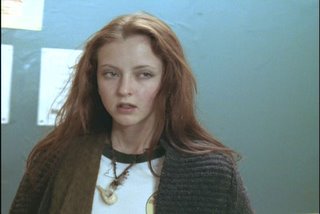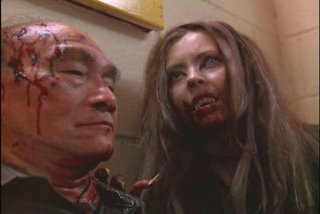
This is Ginger midway-through her startling transformation, basically at the point where she's discovering boys:

And here she is a little further along, before she basically becomes an animatronic Muppet:

So I'm not the biggest feminist film theorist, but it seems pretty clear that Ginger's monstrousness is more destructive than it is liberating. Granted, this isn't the first time that a well-meaning Canadian director has presented borderline-misogynist images on screen, Cronenberg's Rabid and The Brood being particularly problematic examples.
Also, you can see that the movie's DVD presentation is full-frame 1.33:1, which makes comparisons with episodes of Buffy the Vampire Slayer even easier to make. A good episode, to be sure, but TV-level filmmaking nonetheless.


No comments:
Post a Comment